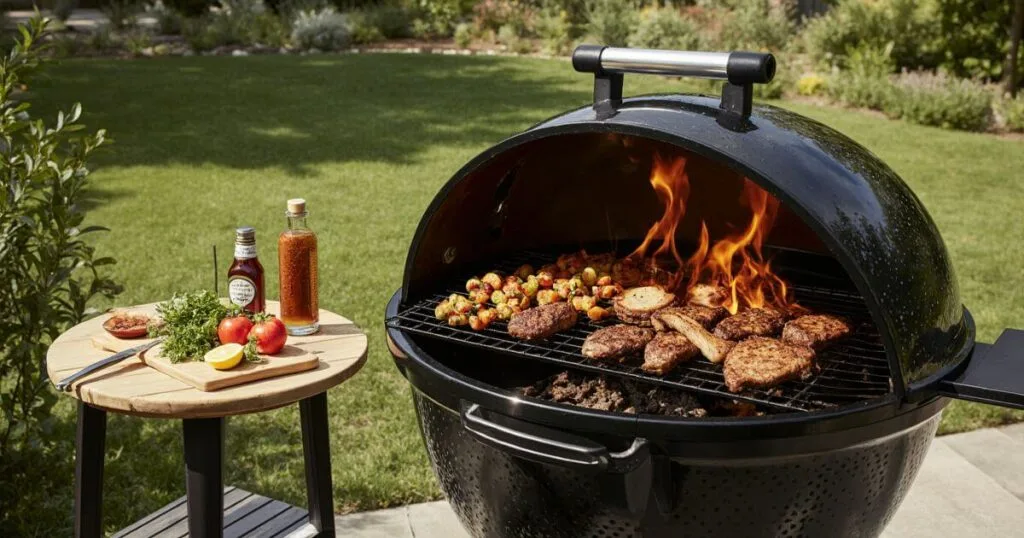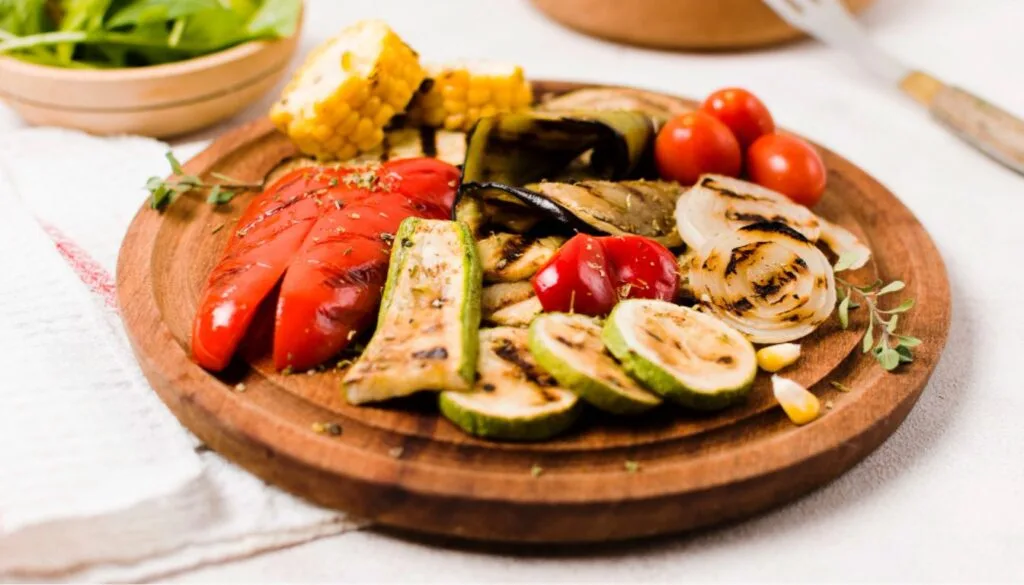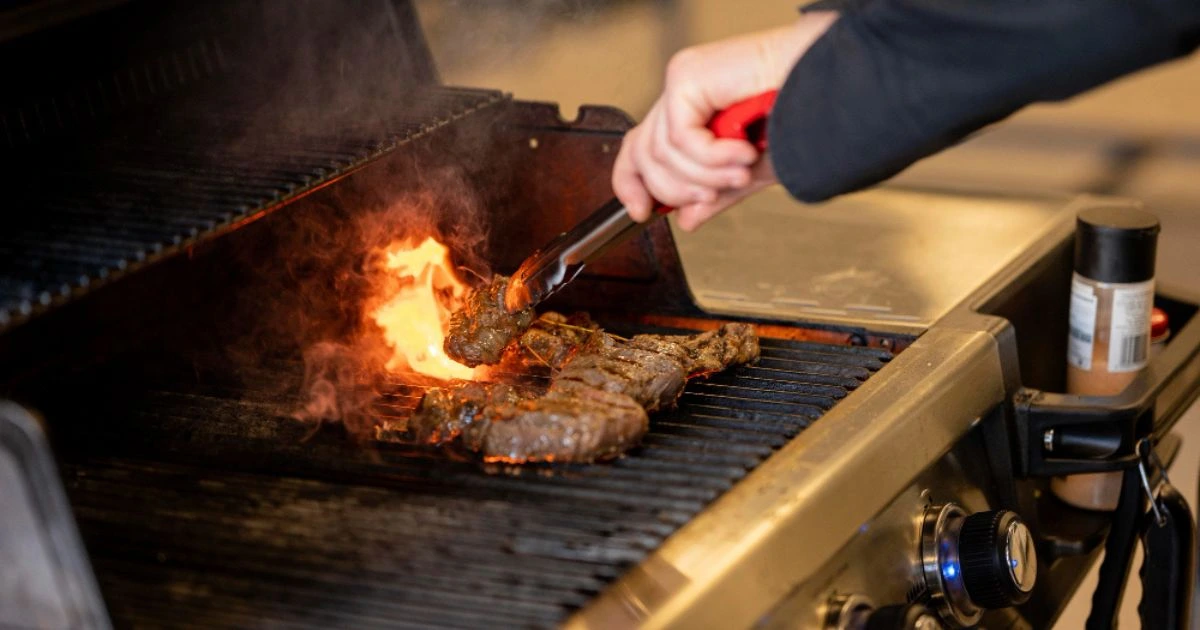The first time I fired up my pellet grill, I knew something magical was about to happen. The rich aroma of wood smoke filled the air. The sizzle of perfectly seasoned meat and the promise of incredible flavor turned my backyard into a culinary playground.
Pellet grill recipes are more than just cooking techniques. They’re an adventure in outdoor cooking that combines convenience with extraordinary taste. Whether you’re a weekend warrior or a seasoned pitmaster, wood pellet grill recipes offer something extraordinary for every home cook.
These versatile grills are game-changers. They excel at both low-and-slow smoking and high-heat grilling. This makes them perfect for everything from tender brisket to crispy chicken wings. No other cooking method delivers such consistent results with minimal effort.
In this guide, you’ll discover mouth-watering pellet grill recipes that will elevate your outdoor cooking game. Get ready to impress your family and friends with restaurant-quality dishes straight from your backyard.
Table of Contents
Essential Pellet Grill Recipes
Pellet grills are great for making delicious smoked meats. They impress everyone. Whether you’re new or experienced, these recipes will help you smoke amazing dishes.
Three classic recipes are must-tries for pellet grill fans. They show how pellet grills can make tough meat tender and tasty.
Classic Smoked Brisket: The Ultimate Pellet Grill Challenge
Brisket is a favorite among BBQ fans. Pellet grills keep the low temperature needed for it. Your brisket will be tender and flavorful.
- Precise temperature control
- Even heat distribution
- Long, slow cooking process
Fall-Off-The-Bone Ribs
Ribs are what to smoke to wow your guests. Pellet grills keep the temperature steady for tender ribs.
Smoked Meatloaf: A Surprising Pellet Grill Favorite
The smoked meatloaf recipe is an underrated star of the pellet grill world. The smoke infuses the meat with rich flavor, while the consistent heat ensures a perfectly cooked center. Try topping it with your favorite BBQ glaze for an irresistible finish.
Remember to let your smoked meats rest. This ensures they stay juicy and flavorful. Pellet grills make it easy to get restaurant-quality results.
Mastering Temperature Control for Perfect Results
Pellet grilling turns cooking into a precise art. It’s all about how temperature affects meat’s texture and taste. Success comes from keeping the heat steady and knowing when to change your plan.
Smoking times and temperatures are key for top-notch results. Different meats need different approaches:
- Low and slow cooking (225-250°F) is best for tough cuts like brisket
- Higher temperatures (350-400°F) make chicken crispy
- Use a reliable meat thermometer to track internal temperatures
Understanding the stall phenomenon is vital for long cooks. Meat temperature can stall as moisture evaporates. Grillers suggest wrapping meat in foil to get past this and keep cooking steady.
Here are some temperature control tips:
- Preheat your pellet grill for 10-15 minutes
- Clean grill grates for even heat
- Choose quality wood pellets that match your meat
- Watch the ambient temperature and adjust slowly
By following these grilling techniques, you’ll make your pellet grill a precision cooking tool. It will give you delicious results every time.
Quick and Easy Weeknight Pellet Grill Recipes
Weeknight dinners can be tough, but pellet grill recipes make them easy and delicious. Your pellet smoker is perfect for quick, tasty meals any night of the week.

Pellet grill recipes are all about simplicity and flavor. They help you make meals that taste like they came from a restaurant, but take just minutes to prepare.
Juicy Chicken Breasts That Never Disappoint
Chicken breasts are often dry, but pellet grill recipes fix that. The trick is to keep the temperature steady and use the right cooking methods:
- Brine the chicken for 30 minutes before grilling
- Use a meat thermometer to ensure perfect doneness
- Cook at 350°F for approximately 20-25 minutes
Smoked Burgers That Elevate Weeknight Dining
Smoked burgers are a game-changer for weeknight meals. They add a rich flavor that makes your usual burgers taste like gourmet food:
- Choose 80/20 ground beef for optimal juiciness
- Smoke at 225°F for 30 minutes before finishing at high heat
- Add wood chips like hickory for extra smoky flavor
Wood Pellet Selection Guide
Choosing the right wood pellet flavors can make your pellet grill recipes amazing. Each wood type has a special flavor that makes different meats and dishes unforgettable.
When picking wood pellets, think about these important things:
- Flavor intensity
- Meat compatibility
- Smoke density
- Burning efficiency
Knowing about wood pellet flavors helps you make perfect pellet grill recipes. These recipes will excite your taste buds. Let’s look at the most popular wood pellet types:
| Wood Type | Flavor Profile | Best Paired Meats |
| Hickory | Strong, bacon-like | Beef, chicken |
| Apple | Sweet, mild | Poultry, fish |
| Mesquite | Intense, earthy | Beef, game meats |
| Cherry | Fruity, subtle | Poultry, salmon |
To keep your pellets in top shape, store them in a cool, dry place. Moisture can ruin their quality and smoking power. Buy high-quality pellets from trusted makers for the best flavor and burning.
Pro tip: Try wood pellet blends for unique flavors in your pellet grill recipes!
Smoking Times and Temperatures for Different Meats
Learning about smoking times and temperatures is key to making tasty smoker recipes. Knowing the right cooking methods ensures perfectly smoked meats every time. Whether you’re using a Traeger, Pit Boss, or Camp Chef pellet grill, these techniques will make your barbecue better.
Smoking meat needs patience and precision. The success depends on controlling internal meat temperature and total cooking time. Your meat probe is your best tool in this journey.
Beef Smoking Guidelines
Beef needs careful attention to smoking times and temperatures. Different cuts need different approaches:
- Brisket: Low and slow is the mantra
- Ribeye: Higher temperatures for perfect sear
- Chuck roast: Extended smoking for maximum tenderness
| Beef Cut | Smoking Temp | Target Internal Temp | Approximate Time |
| Brisket | 225°F | 203°F | 1-1.5 hours per pound |
| Ribeye | 275°F | 135°F (Medium Rare) | 45-60 minutes |
| Chuck Roast | 250°F | 195°F | 1-1.25 hours per pound |
Poultry Cooking Times
Poultry needs extra attention to food safety. Always check your chicken and turkey’s internal temperature to avoid foodborne illnesses.
- Whole Chicken: Smoke at 275°F until internal temp reaches 165°F
- Turkey Breast: Maintain consistent temperature around 250°F
- Use a reliable meat thermometer for accurate readings
Pro tip: Rest your smoked meats for 10-15 minutes after cooking to redistribute juices and enhance flavor.
Grilled Vegetables and Side Dishes

Take your pellet grill recipes to the next level with tasty grilled vegetables. They turn simple side dishes into unforgettable meals. Pellet grills add smoky flavors and perfect caramelization, highlighting the vegetables’ natural sweetness.
Choosing the right vegetables is crucial for great results. Here are some top picks for pellet grilling:
- Bell peppers
- Zucchini
- Asparagus
- Portobello mushrooms
- Corn on the cob
Seasoning is key for delicious grilled vegetables. Pro tip: Mix olive oil, kosher salt, fresh pepper, and herbs with your veggies before grilling. The wood pellets will enhance the smoky taste of your side dishes.
It’s important to control the temperature for perfect grilled veggies. Use medium-high heat, around 400-450°F, for great char marks without burning. Rotate the veggies every few minutes for even cooking and the best flavor.
The secret to amazing grilled vegetables is patience and attention to detail.
Try different wood pellet flavors like hickory or apple to add unique tastes. Your pellet grill recipes will be transformed once you learn to grill vegetables perfectly!
BBQ Sauces and Rubs for Pellet Grilling
Great pellet grill recipes need more than just good meat. They need layers of flavor that make every bite special. BBQ sauces and rubs are key to turning good grilling into amazing meals.
Creating the perfect flavor starts with knowing how ingredients work with smoke and meat. Your pellet grill is a blank canvas for your culinary dreams.
Signature BBQ Sauce Recipes
Making your own bbq sauces lets you tailor flavors just right. Here are some basic flavors to start with:
- Classic Tangy Tomato Base
- Spicy Chipotle Blend
- Sweet Kansas City Style
- Carolina Mustard Sauce
Essential Dry Rubs
Dry rubs add depth to your pellet grill dishes. Each mix brings its own taste:
- Classic BBQ Rub: Paprika, brown sugar, black pepper
- Texas-Style Rub: Coarse salt, chili powder, garlic
- Coffee Rub: Ground coffee, cocoa, cinnamon
Marinades and Glazes
Marinades and glazes change how meat tastes and feels. Pro tip: Put glazes on in the last 15-20 minutes to avoid burning.
“The right marinade doesn’t just flavor meat – it tells a story on your plate.” – Professional Pitmaster
Remember, making bbq sauces is an art. Try new things, taste, and find your own style. This will make your pellet grill recipes unforgettable.
Advanced Pellet Grill Techniques
To take your wood pellet grill recipes to the next level, you need to learn some advanced grilling techniques. These skills are what set amateur cooks apart from true barbecue masters. They help turn simple meals into unforgettable dishes.
Getting the hang of precise temperature control is key for amazing wood pellet grill recipes. Your pellet grill can do a lot when you master these techniques:
- Reverse searing steaks for perfect doneness
- Creating multi-zone cooking environments
- Achieving competition-level bark on meats
- Implementing cold smoking methods
Professional grilling is more than just cooking. Mastering the smoke ring is all about choosing the right wood, managing temperature, and preparing your meat. Grillers who know their stuff use consistent heat and the right wood to boost flavors.
Being precise with temperature is crucial for wood pellet grill recipes. Try these techniques:
- Calibrating your grill’s temperature zones
- Using probe thermometers for accurate monitoring
- Controlling airflow and pellet feed rates
- Implementing indirect heating strategies
By using these advanced grilling techniques, your backyard barbecue will become a gourmet feast. It will impress even the pickiest food lovers.
Conclusion
Your pellet grill journey turns simple meals into amazing dishes. These recipes show how versatile pellet grilling is. You’ve learned to make everything from tender brisket to grilled veggies taste great.
Success comes from trying new wood pellets, temperatures, and methods. Each recipe is a chance to get better and make meals that everyone loves. Whether you cook a lot or just sometimes, there’s a recipe for you.
Keep exploring outdoor cooking with your pellet grill. It’s not just for cooking; it’s for making memories with loved ones. Start with these recipes and then try your own creations. They’ll become family favorites.
Keep practicing with your pellet grill. Every meal is a chance to learn and enjoy great flavors. Your pellet grill is waiting to help you become the top chef in your backyard.
FAQ
What makes pellet grills different from traditional grills?
Pellet grills mix the taste of smoking with modern ease. They burn wood pellets for steady heat and smoky flavors. Unlike charcoal or gas grills, they control temperature well and are good for many cooking ways.
How do I choose the right wood pellets for my recipe?
Wood pellets match different meats and dishes. Apple wood is sweet, good for poultry. Hickory is bold, great for beef. Mesquite is intense, perfect for strong meats. Pick pellets based on the meat and your taste.
Can I use a pellet grill for more than just smoking meats?
Yes! Pellet grills are very flexible. You can smoke meats, grill veggies, bake pizzas, and even cook desserts. They’re great for many dishes, not just BBQ.
What internal temperature should I aim for when smoking different meats?
Internal meat temperature depends on the cut and how you like it. Beef brisket should be 195-205°F for tenderness. Chicken needs to be 165°F for safety. Always use a meat thermometer for accurate cooking.
How do I prevent meat from drying out on a pellet grill?
Keep the temperature steady and don’t overcook. Use a meat probe and try brining or marinades. For lean meats, cook at lower temperatures and for shorter times.
What are some tips for achieving a great bark on smoked meats?
For a great bark, use a dry rub and keep the temperature at 225-250°F. Avoid wrapping too soon. Let the meat get a dark, crusty exterior before wrapping. Patience is key for a perfect bark.
How should I store wood pellets?
Keep wood pellets in a cool, dry place to avoid moisture. Use airtight containers or the original bags. Moisture can make pellets expand and lose flavor.
Can beginners use pellet grills effectively?
Yes! Pellet grills are easy to use, with digital controllers for steady heat. They’re great for new cooks. Start with simple recipes and get better with practice.
What’s the difference between smoking and grilling?
Smoking cooks at low temperatures (225-250°F) for a long time, adding flavor and tenderizing. Grilling cooks fast at high temperatures for a charred outside. Pellet grills can do both, offering versatility for outdoor cooking.
How do I clean and maintain my pellet grill?
Regular care includes cleaning grates after each use and emptying ash and grease often. Do a deep clean every few months. Check parts, inspect the burn pot, and ensure the pellet feed works right. Follow the manufacturer’s maintenance guide for your model.

